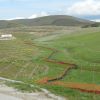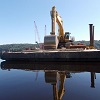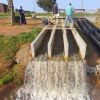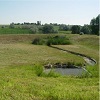
BMP Management: Your Essential Best Management Practice Package
-
Register
- Non member - $175
- Professional member - $150
- Professional Plus member - $150
- Professional Plus Org member - $150
- Student member - $150
- Young Professional member - $150
- Emeritus member - $150
- Discounted Professional member - $150
- Australia Member - $150
- Australia Non-Member - $175
From construction site compliance to maintaining permanent BMPs this five (5) course package will cover the material you need to know to get the job done.
Package Includes:
- The Best of BMPs: Application, Implementation and Maintenance
- Construction Site Compliance in 10 Easy Steps
- Stormwater Compliance Success: Using Proactive BMPs to Minimize Regulatory Discharges
- Testing and Specifying Rolled Erosion Control Products
- Maintenance of Permanent Best Management Practices
Course Level: All
At the completion of all five (5) courses in this package, you will receive 5 Professional Development Hours of credit. For any questions on continuing education credit, please contact IECA Education at education@ieca.org
-
Contains 6 Component(s), Includes Credits
This course will introduce you to stormwater regulations. You will learn how to identify, classify, inspect and document the repair Best Management Practices, or BMPs, used on construction Sites to help prevent the pollution of storm water.
This course contains two modules. In module one of stormwater regulations, you will learn how to identify, classify, inspect and document the repair Best Management Practices, or BMPs, used on construction Sites to help prevent the pollution of storm water. Module two will teach you how to inspect and document the repair of BMPs.
Course Level: All
At the completion of this course you will receive 1 Professional Development Hour of credit. For any questions on continuing education credit, please contact IECA Education at education@ieca.org
-
Contains 4 Component(s), Includes Credits
In this webinar, attendees will explore cost-effective solutions to minimize or eliminate storm water discharge exceedances, as well as the risk of violations and fines.
In this webinar, attendees will explore cost-effective solutions to minimize or eliminate storm water discharge exceedances, as well as the risk of violations and fines. Larsen will discuss how a series of small, cost-effective best management practices (BMPs) such as sediment traps, bioretention media, vegetated percolation, and infiltration trenches close to the source can minimize or eliminate regulatory discharges.
Three main categories of techniques are presented--infiltration, filtration and detention--as well as case studies, their violations and the preventative solutions in hindsight. Larsen will present several projects where plan review and simple measures prevented storm water discharges through containment or infiltration, saved thousands of dollars and eliminated risk.
As a leader, creating a clear, compelling vision of storm water compliance success is essential. Storm water management and containment practices largely have been in response to growing community awareness of the environmental effects of urbanization on water quality. Larsen will articulate how goals and responsibilities can be informed by an interest in educating and creatively leading by example to minimize and eliminate pollutant sources in our storm water discharges.
Course Level: All
Co-hosted by:
Sponsored by:

Mary A. Larsen, QSD, ToR, CPSWQ and CPESC
Mary A. Larsen, QSD, ToR, CPSWQ and CPESC, is the president of Stormwater Specialists Inc. Larsen is a Qualified SWPPP Developer (QSD) #024 and Qualified SWPPP Practitioner (QSP), as well as a Certified Professional in Storm Water Quality (CPSWQ) #608 and a Certified Professional in Erosion & Sediment Control (CPESC) #4406. In July 2010, Mary became one of the first 30 Trainers of Record (ToR) for the California Construction General Permit and ToR for the Industrial QISP program. Larsen has 40 years of experience in the construction industry and 33 years of experience as a Licensed General Engineering A Contractor. Larsen provides the QSP and QSD training courses approved by the State Water Resources Control Board. She has trained more than 2,000 QSPs and QSDs and provides diverse storm water training to thousands of contractors, builders, developers, trades, agencies, districts, schools and the general public. Larsen also has prepared more than 3,000 site-specific SWPPPs for agencies, public works, Caltrans, commercial, residential and industrial projects. Larsen recently served on the Western Chapter of International Erosion Control Assn. (IECA) Board of Directors and as an IECA National Trainer. She also is an active member of the California Stormwater Quality Assn. (CASQA), United Contractors Assn. and the Sacramento Regional Builders Exchange.
At the completion of this course you will receive 1 Professional Development Hour of credit. For any questions on continuing education credit, please contact IECA Education at education@ieca.org
-
Contains 3 Component(s), Includes Credits
Construction sites are dynamic, complicated processes that are in constant change. Maintaining environmental compliance on these sites is very challenging. In addition is remains constant and is seldom something that you can “checkoff the list”.
“Talk is cheap – but it can really make your project profitable!”
Construction sites are dynamic, complicated processes that are in constant change. Maintaining environmental compliance on these sites is very challenging. In addition is remains constant and is seldom something that you can “checkoff the list”. The one item that assists most during this strategy for compliance is communication. This webinar will discuss 10 simple communication strategies that, when implemented, assist your project with continuity and profit for environmental compliance. Whether you are a regulatory professional who is trying to maintain compliance within a jurisdiction or a construction professional trying to keep your project moving forward – this course is for you. Designers, you may want to pay attention because these are often the reasons your SWPPP’s are not properly implemented. Join me for an hour of action packed items that can really make a difference on your next project. Communication is by far the most underutilized BMP on every single construction project…. This webinar will provide the participant with training and skills to comply with regulations, ensure sensitive resources remain protected, and properly document activities during the construction project. In addition, this webinar will discuss how to communicate with regulatory and design professionals in order to accomplish a common goal – a compliance complete construction project. SWPPP’s are required on every construction site that disturbs one acre or more. This webinar will teach the participants how to get the SWPPP out of the office, and correctly implemented in the field.

Learning Objectives:
- Attendees will learn how to use documentations to tell your story of compliance.
- Attendees will learn about proactive site management that saves you money.
- Attendees will develop an understanding of communication on projects that makes the difference
Course Level: All
Last Updated: September 20, 2017
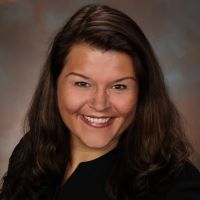
Jennifer Hildebrand, , CPESC,CPSWQ, CESSWI, CISEC
Jennifer Hildebrand, CPESC, CPSWQ, CESSWI, CISEC has been involved in the erosion and sediment industry for over 18 years. She has a master’s degree in Business Administration from Augsburg College, and specializes in compliance strategies within the stormwater market. She is a registered Certified Professional in Erosion and Sediment Control and a registered Certified Professional in Stormwater Quality. She is a registered Certified Erosion, Sediment, and Stormwater Inspector. She is also a Certified Inspector for Sediment and Erosion Control. Currently employed by Weis Builders, Jennifer's experience and industry involvement allow WSB to deliver excellence in environmental compliance to their clients. Her specialties include stormwater compliance issues, training and awareness programs, site inspection programs, compliance program design, and site plan reviews. She has developed and delivered education and compliance programs in both the construction and post construction stormwater market. Her involvement in the construction industry has provided her with valuable experience in a wide variety of stormwater compliance products and services. As a result, Jennifer has developed a selection of technologies that involve several methods of hydraulic application techniques and biotechnical stabilization practices throughout the United States and Canada. This private industry experience and public representation experience provides opportunities for facilitation of appropriate stormwater, erosion, sediment, control programs and techniques. In addition, this experience also illuminates the challenges and opportunities that exist in post construction phases of stormwater compliance. Jennifer has gained valuable insight into the realities of land development, commerce, and environmental impacts in the stormwater industry as a result of her involvement with these non-profit entities, as well as the private sector of this business. Among these organizations she has given numerous presentations on proper management practices, installation techniques, full day programs on erosion and sediment control practices, along with numerous product specific presentations. Her presentations and classes have been conducted in Minnesota, North Dakota, South Dakota, Illinois, Wisconsin, Idaho, Indiana, Michigan, Tennessee, and New Mexico.
-
Contains 4 Component(s), Includes Credits
This technical presentation will cover the testing and specifying of Rolled Erosion Control Products based on ASTM standardized test methods. We will describe and recommend test methods that should be used to evaluate Rolled Erosion Control Products for quality, uniformity, and performance.
This technical presentation will cover the testing and specifying of Rolled Erosion Control Products based on ASTM standardized test methods. This presentation will describe and recommend test methods that should be used to evaluate Rolled Erosion Control Products for quality, uniformity, and performance. In addition, data will be presented that correlates testing of material properties to field performance characteristics. Attendees will learn of the effort by the National Transportation Product Evaluation Program (NTPEP) to create a nationwide system of testing requirements for Rolled Erosion Control Products, and how this effort has created a knowledge base of data derived from standardized test methods that allows end users, manufacturers, and designers to determine which Rolled Erosion Control Product is appropriate for use on any given construction site.

Learning Objectives:
- Learn about ASTM Standardized test methods used to evaluate Rolled Erosion Control Products.
- Learn about the importance of using standardized test methods to improve quality and reduced variability in Rolled Erosion Control Products
- Learn to used data developed through standardized test methods to develop generic specifications for use in determining which product is right for your job site.
Course Level: Intermediate
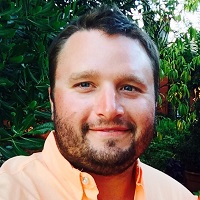
James Sprague, CPESC
Jay Sprague, a Certified Professional in Erosion and Sediment Control, is the Laboratory Director of TRI Environmental’s Denver Downs Research Facility in Anderson, SC. Mr. Sprague has been integrally involved with implementing large-scale test methods, including the construction and maintenance of the state-of-the-art facilities that make TRI the only independent commercial laboratory offering a wide array of performance testing capabilities. After helping to construct DDRF as a college intern in 2006, Mr. Sprague completed his degree in Agricultural Economics at Clemson University and spent the next 3 years specializing in agricultural, erosion control, and sediment control products as a Market Development Manager at Pennington Seed Company. As Laboratory Director for TRI’s Denver Downs Research Facility, Mr. Sprague supervises a staff of technicians, directs all site operations and testing, and is responsible for implementation of TRI’s Quality Systems throughout all lab operations. Mr. Sprague is a member of the IECA Southeast Chapter Board, as the South Carolina state representative. In addition, Mr. Sprague has authored or co-authored multiple peer reviewed technical papers, and was awarded the “Most Distinguished Technical Paper” award for his paper, “Evaluating Floating Surface Skimmers” in 2015, by the International Erosion Control Association. Mr. Sprague resides in Greenville, SC with his wife and two young boys.
At the completion of this course you will receive 1 Professional Development Hour of credit. For any questions on continuing education credit, please contact IECA Education at education@ieca.org
-
Contains 4 Component(s), Includes Credits
As more permanent stormwater best management practices are being installed across the nation, performing ongoing maintenance has been a challenge. Permanent stormwater BMPs are now required in most urban developments across the country and it is crucial that these BMPs be maintained correctly.
As more permanent stormwater best management practices (BMPs) are being installed across the nation, performing ongoing maintenance has been a challenge. Permanent stormwater BMPs are now required in most urban developments across the country and it is crucial that these BMPs be maintained correctly. All permanent stormwater BMPs require regular maintenance to remain operating as designed. Maintenance has been neglected in the past due to a failure to understand who is responsible for maintenance, failure to budget for maintenance, and from a lack of knowledge on appropriate maintenance practices. In this webinar, we teach participants to recognize permanent stormwater BMPs in the field, identify maintenance needs and activities, and to perform maintenance correctly. This webinar will provide attendees a broad introduction to the needs and application of permanent stormwater BMP maintenance.

Learning Objectives:
1) Identify different types of permanent BMPs in the field
2) Identify individual components of permanent BMPs
3) Identify and perform maintenance needs of permanent BMPs
Course Level: All

Tyler Dell
Tyler Dell is a Research Associate at Colorado State University with a Master’s Degree in Civil and Environmental Engineering. Currently he is focusing on research as it relates to urban stormwater and using green infrastructure and low impact development to mitigate the impacts of urbanization. Tyler is also the Program Manager for the Colorado Stormwater Center where his responsibilities include providing contract research services for municipalities in Colorado, organizing and teaching workshops for stormwater personnel regarding post-construction stormwater best management practices, as well as providing support to Colorado residents regarding stormwater questions they may have.
At the completion of this course you will receive 1 Professional Development Hour of credit. For any questions on continuing education credit, please contact IECA Education at education@ieca.org


